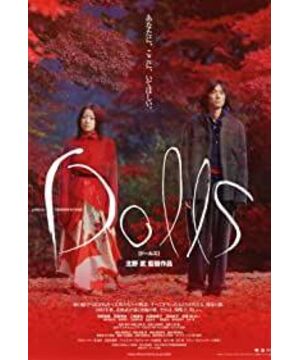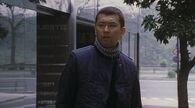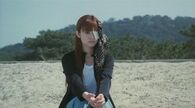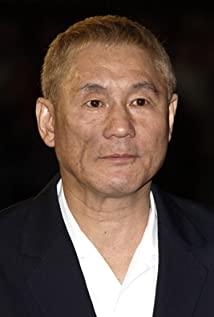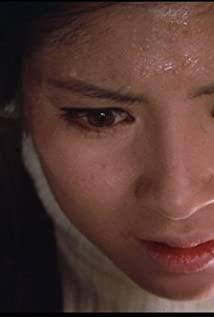I am addicted to moving Kitano Takeshi’s self-report. The self-report of "The Doll" is the longest narration in his book about movie works. He talked in detail about his motives, many changes in creation, clothing designed by Yohji Yamamoto, and modern society. The decline of aesthetics, excessive anxiety and disability of communication, more than a real violent expression of face, his trip to Russia...
In "Dolls", Kitano wraps the modern, fragile and fast-food mental state with a traditional and exquisite coat. He has a face with facial paralysis, but is very sensitive to the world, and always remains anxious. He is afraid that his handyness and external approval will frame him, so he has been struggling to find a way out. It deserves to be commissioned by Akira Kurosawa to take on the future of Japanese cinema. But starting from Japan, he seems to be thinking about something broader, especially starting from the self-portrait trilogy. The more experimental nature is full of reflections on the status quo of the shackles of world cinema.
The following text is moved from the book "The Self-report of Takeshi Kitano". The black part was compiled and written by the interviewer Michel Terman, basically focusing on the film itself or the background introduction of the film. The gray part is the self-report of Takeshi Kitano.
In 2002, Kitano took this amazing and shocking "Doll" to show for the first time the seriousness and vigilance of film workers. His most modest movie is neither humorous nor violent, and the shooting technique is like a set of picture albums.
When the film was screened at the Venice Film Festival, the response was rather cold: critics and exhibitors who were used to seeing the story of Japanese killer uncles were surprised by the atmosphere of the film. This film is obviously the author's most refined and feminine film. The carefully filmed "Doll" tells three heart-warming love stories, combining the heroine who is bitten by pain and melancholy, and the young antihero who is tortured by remorse.
"Doll" is a movie that I particularly value. Its strange atmosphere is quite rare in my film works. The concept of this film is very unique. In the early stages of preparation, I wanted to depict on the big screen what people might look like when they lose their feeling of love, respect, and friendship. In fact, I feel that in our time, people don’t know how to talk anymore. Because life is busy rushing to and fro, it seems that the natural pressure, as well as the usual accidents of the size, occupy everyone's time and mind, make people lose contact with each other, and communication is almost disabled.
This movie consists of three stories, inspired by the traditional Japanese puppet show: Bunraku. Bunraku’s main work comes from the father of this traditional art, the playwright Kinmatsumon Zaemon. He also turned to writing Kabuki scripts-among them, the dramas called "Seikamono" (historical dramas) became The core of Bunraku's normal repertoire is mostly human emotions, emotional problems, sad love, and sorrow. When we first encounter bunraku’s theater performances, at first glance, bunraku is very simple. In fact, it is a very delicate and delicate art. It is very beautiful. Just like calligraphy, it is a suggestive art, delicate. To expose the relationship between individuals.
A Bunraku figure (Jing Liuli Puppet) must be operated by three people: a novice is responsible for the movement of the feet, and the deputy is responsible for manipulating the left hand of the puppet with his right hand. As for the main puppeteer, he is in charge of the rest, that is, the head and right hand, and he must have at least twenty to thirty years of experience to achieve this status.
Although they will be seen by the audience anyway, the three puppeteers will still wear black clothes to keep themselves as low-key as possible. Their technology is so exquisite, sensitive, and delicate, it is amazing. They must also be very soft to move with their legs half-bent for a long period of time.
There are two types of puppets' poses, one is more realistic and the other is more sculpted, depending on the emotion that the puppeteer wants to express. In this artistic performance, a singing husband (narrator) and an accompaniment musician are also paired. This is a very particular type of art that emerged in Kyoto and Osaka in the 17th century.
When I conceived "Dolls", my idea was to put the most beautiful, fragile, and delicate relationship on the screen, just like Kinmatsumon Zaemon presented on stage. Those relationships that are mostly sentimental are those of our time. The "Doll" I imagined at the beginning, although it is a story about people, is illustrated by the human figure Jing Liuli doll, and the characters in the play do not speak. At the time, I even thought it was enough to use subtitles, a bit like the silent films before. Later, I gave up this idea and switched to using the human figure Jing Liuli puppet as the main character in the movie, coexisting with the human role. Such a "doll" is not exactly the movie I originally conceived. It does not have the theater aspect that I imagined at the beginning, especially the description of the love that is finally bound by martyrdom, hurt, and impossible. Nevertheless, the original idea was presented on the screen through clips of the transition of the seasons.
How the "Doll" was completed is actually a tortuous process. First of all, I want to change my style and make a movie about passionate love. It is no longer a story of the underworld, no more violence, blood, and no gang members-the only underworld figure that appears in the film is an old man. Gangster, depressed, worried, lonely, full of regret... I want to make a movie that tells the simple story of men and women. From the very beginning, I imagined a couple of inseparable beggars, wandering together, connected by an indestructible chain of love. I think of a story that alternates with the four seasons, and I also think of a photography composed of constantly changing backgrounds, presented in several viewing angles, and composed of bright colors.
But soon, as the script gradually took shape, I found that this story could not be established. I asked myself: Maybe, this script is too simple? I feel that the development of this story is no longer as I expected, nor do I think that these two characters alone can support the entire movie. It was under such circumstances that I thought of adding two more plots to match the original story, and then let these three stories continue to develop.
At this moment, something completely unexpected happened. A dramatic change! My friend, Yohji Yamamoto, a well-known fashion designer who was once responsible for the costumes of "Big Brother", promised to make costumes for "Dolls" early on. I was very happy to be able to work with him again, but later, the clothes designed by Yohji Yamamoto couldn't match the story at all! When he showed up with his works, the scene was so funny!
The costumes he creates are of course very beautiful, and it can even be said to be beautiful. However, it is impossible for a tramp to wear such clothes! I had to remind him that these costumes were meant to be worn by a couple of men and women in the movie... I can imagine and understand that Yohji Yamamoto designed it this way. The situation was very special at the time. I knew he was too busy to flip through, and at the same time preparing for the fashion show and the latest season of clothing to be launched in Paris. I can imagine how full his schedule is!
I know Yohji Yamamoto. I know he must have spent several nights making these costumes. I hope I will like it and try my best to do this work. So I can’t rudely send him away, and I can’t say to him politely: "If it doesn't cause too much trouble, can you redesign all of them?" Nevertheless, these gorgeous and brightly colored costumes did cause some anxiety for the shooting and production team. What should I do? We were completely stupid and completely defeated.
When thanking Yamamoto Yoji, I thought of a solution: to change the script to strengthen the image expression of the theater's orientation and narrative. I decided to disrupt the story and let the character be manipulated like a doll in Bunraku. In fact, thanks to Yohji Yamamoto's costumes, I returned to my original idea and returned to the Joruri puppet show. It feels a bit like he finished half the movie alone! His costume influenced the production of this film.
From any angle, the process of completing this film is a brand new experience. I am preparing to shoot a big screen work, the subject of which is taken from a traditional drama, this is the first time. And during the shooting, one of the focuses I paid attention to was how to use the dynamic work of the camera to show the classic art of ancient Japan.
Similarly, in order to present the play "Hell's Messenger" mentioned at the beginning of the movie, I used four paintings I completed earlier as reference data and script elements-well, it is an overstatement to say it is a script. Because in general, I don’t use storyboard scripts in my work, and I often use oral explanations and explanations, relying on the collective work of the team. Before "Dolls", I never needed-maybe only when shooting "Fireworks"-to "write" the plot line with images, and I had never imagined the passage of a movie like a stage play.
The special thing about this movie is that during the filming, I kept asking my actors and actresses to "never act", but they are here to act! This makes them a little bit embarrassed. Think about how these actors will react when you tell them to try not to be present, let alone acting, and he is clearly on the scene of the movie, and the camera is still shooting! When filming, I insisted and asked the actors to abandon their professional reflection and interpretation instincts as much as possible. I want them to look like "humanoid joguri puppets" on the screen. For many people, this is not a simple matter. It’s the same for me. It’s a brand new attempt to work with a large number of actors I don’t know.
My previous movies didn't have too much color, and they tended to reproduce the monotone atmosphere repeatedly. The word "Kitano Blue" (Kitano Blue) is appropriate for most of my movies. But now I want to make a breakthrough, I want to use color, and especially want to shoot the four seasons. This desire to show brilliant, bright, and true colors on the screen is one of the motivations for making this film.
Good luck came immediately after the filming started. Autumn came early that year, and the maple leaves showed a dazzling bright red earlier than expected. This is really an unexpected surprise. Anyway, we planned to wait for the blooming moment of each season, from autumn all the way to spring. Because the main point in "Dolls" is that everything is fleeting. What I want to express is the fleeting aspect of Japan's four seasons and nature. In addition, the paintings also helped me a lot.
The colors in "Dolls" are sometimes very deliberate, especially those with red as the base tone, which can be used to express enthusiasm. These reds are condensed at a specific point in the movie to emphasize the dramatic evolution of the intense emotions of the couple tied up by the rope. Their love makes us incomprehensible and even scared. The red impressed me deeply. I am very happy that the filming of the film was carried out in this grand gathering of natural colors. Having said that, I can't help feeling regret. Modern Japan concentrates on "business", abandoning bright natural colors and letting them disappear slowly... I regret the decline of such beauty. The cultural identity of the Japanese disappeared before our eyes.
During the shooting, I was not sure whether these images could be displayed well on the screen. And when I saw the footage of the autumn scene, I was very satisfied. The photography is very beautiful: the clothes of Yohji Yamamoto, the cherry blossom trees in spring, the red and yellow leaves in autumn are harmonious.
I know the box office of this movie will not be very successful, but I admit it, because I have always wanted to make a work of this type. In my opinion, "Doll" is a bunraku made into a movie, just like I have always dreamed of. Some people say that the film "Doll" has made me a lot better, and my movie has become even better. However, it is difficult for me to accept such compliments, and even thinking of it can make me feel embarrassed. It’s a bit like the first time I went to a "bubble bath"...
In Japan, "bubble bath" (soap land) refers to massage salons that provide sexual services. Men would go to this kind of massage shop and spend money to have a slippery close contact with a massage girl. In Japan, this type of massage parlor has long been called "Turkish bath". After receiving formal protests from Turkey, this Japanese-English name has become more and more common.
I have said this sentence many times-no matter how it looks, "Doll" is a violent movie in my eyes, reflecting the anxiety of this society. The people mentioned in this film, those men and women, especially young people, do not want to fight at all, and do not want to pursue the goals praised by modern society, such as succeeding anyway, getting married, organizing a family, and so on. These things have no meaning in their eyes, nor are they important. In fact, "Doll" shows how some of us may fall into a fragmented end under the blow of fate. In the end, because it was their own choice, or succumbed to certain restrictions, the characters in the movie escaped from simple happiness. And their escape seems to be so compelling and urgent. For example, when a young woman feels that she has been betrayed and abandoned by a loved one, she decides to stop herself. In my opinion, this is a truly violent manifestation that can be caught off guard.
Violence is not only one aspect. It can be as cruel as the tsunami triggered by the Indonesian Sumatra earthquake in December 2004. At that time, no one expected such a violent natural phenomenon to exist. A deep earthquake, and then a terrifying wave swept away everything... Such violence is totally different from the destruction caused by the Iraq War, which we tracked simultaneously on TV. This war can be called a pre-planned...
"Doll" also thinks about the disability and disease, it seems cruel to the extreme, such as a heroine leading a blind man walking in a beautiful place. In "Dolls", death happens for no reason. Every time, when the characters in the film try to touch happiness, they will be knocked down by death. This movie shows the subtle relationship between love and death. To love, is not to die little by little? In the pond seen in the film, the water lily symbolizes the Buddha, and in a way, it also symbolizes death. In "Dolls", there is a connection between beauty and fleetingness. Even on the big screen, beauty will not last forever.
"Doll" has achieved some degree of success in several European countries, especially in Russia. God knows why! Maybe it's because the Russians are very melancholic romantics? After it was launched in Moscow's theaters, it continued to be shown for two years, and it was re-released regularly. Because "Doll" is so popular in Russia, in 2007, someone asked me to help Russian TV make a commercial, using the "Doll" to brag to Russian consumers about the advantages of the Japanese brand Panasonic plasma TV... I really did it. .
When the advertisement was finally completed, a press conference was held in Tokyo. Several Russian media reporters and broadcasters attended, including two television stations, several weekly magazines, monthly magazines, and daily newspapers. I have received many interviews and I am exhausted. Russian reporters are quite humorous. In an interview, a reporter believed that I "have great power in Japan" because I produced and hosted many TV shows, and because of the movies I had made in the past 15 years, and then he added with a laugh, saying that I am It is "Putin of Japan". I didn't laugh, I couldn't laugh at all... I can't take this sentence as a compliment, because this comparison is very unfair. Me, I have never made people in Chechnya martyrs, nor have anyone been poisoned by the element of polonium!
It was under such circumstances that a commercial that reproduced the dazzling scenery and bright colors in "Dolls" captured the small Russian screen. At the end of this advertisement, Kitano said a word in Russian: "Perfect" (Prevoshodno). The billboard that occupied the Red Square at that time was astonishingly large: a 15-meter-high and 400-meter-wide poster was printed with a huge face of Takeshi Kitano dyed with platinum hair.
In June 2008, Kitano was once again invited to participate in the 30th Moscow International Film Festival. During the festival, several of his film works were screened, including "The Fierce Man", "Sonata", "Fireworks", "Dolls" and "Zao". Head market. Kitano was awarded an honorary award for his overall achievements in the film. "I am very happy to receive this award in a country full of history and tradition, and at the same time creating many art forms." Kitano declared at the time. In addition to the film festival, he also taught a real "film lesson" in the Russian capital. Kitano Takeshi is the most popular Japanese in Russia.
A few months ago, I was in Moscow, where I saw a huge show of wealth: luxury cars as long as trucks, Ferraris, bullet-proof Mercedes Benz cars... Compared with the Soviet Union in the past, it is a far cry! This gap is even greater in my eyes, because I read Solzhenitsyn's work during this trip... This trip brought me face to face with Russian journalists again. They were so funny, they didn't ask me questions, but threw flowers on me...
In Moscow, they let me stay in a luxurious hotel facing the Kremlin. One night, I heard an exaggerated commotion. When I opened the window, I thought that the Chechens had occupied the Red Square! Because the Red Square is full of black people, full of people! It turned out to be because Russia just won the Netherlands in a football match!
View more about Dolls reviews


